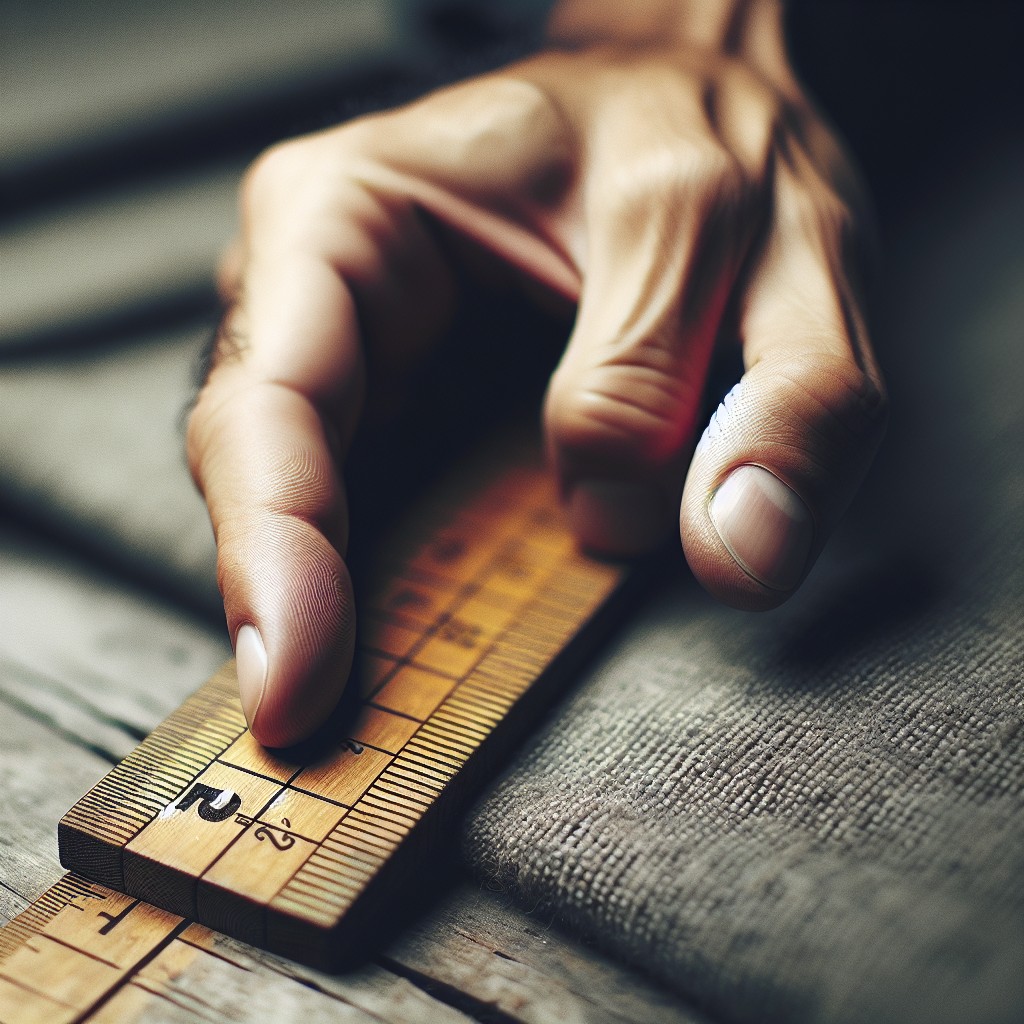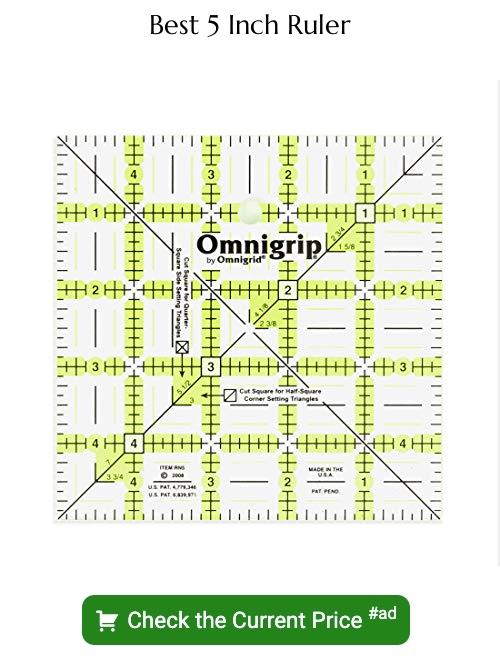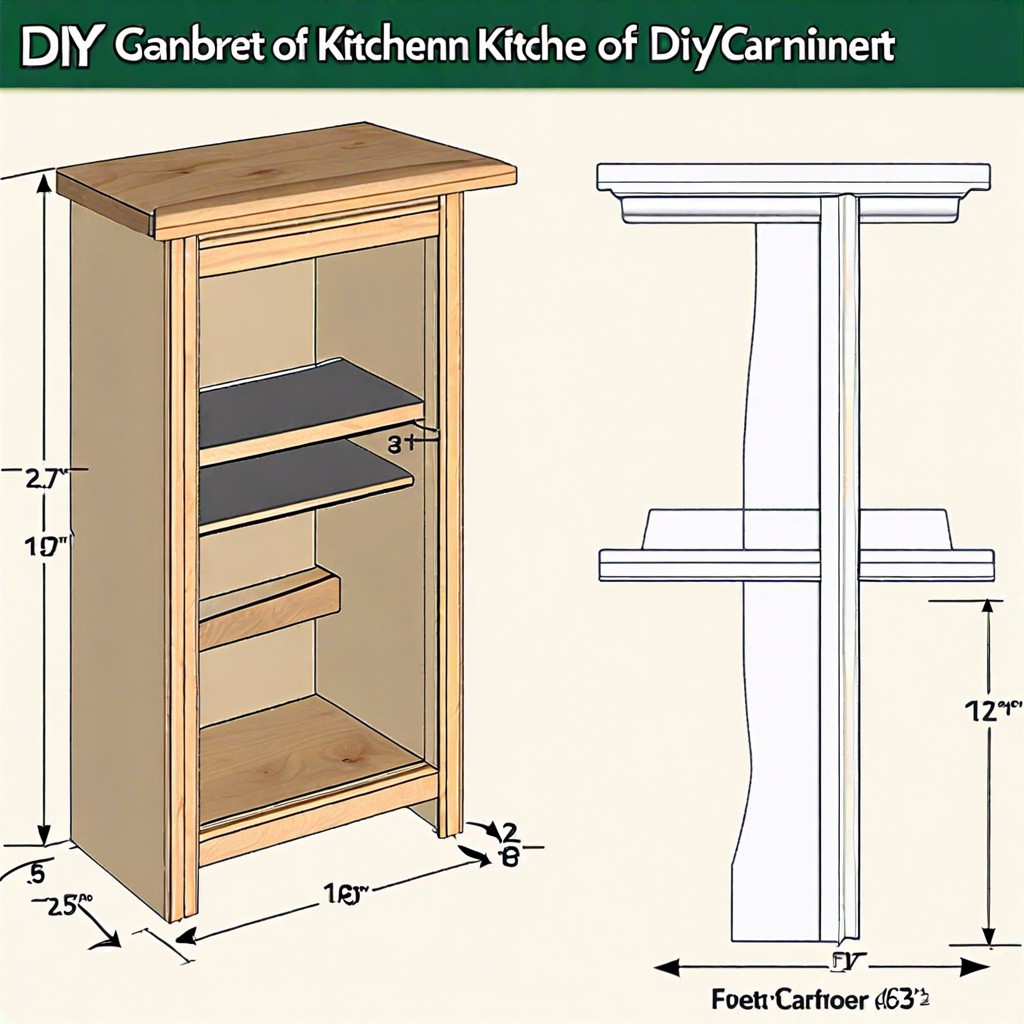Last updated on
Diving right into the heart of relatability, this article unfolds a perspective-changing exploration about the size of five inches, because odds are, the objects you interact with every day provide better context than a cold metal ruler.
Key takeaways:
- Precision Matters: Accurate markings ensure accurate measurements.
- Metric Conversion: 5 inches is approximately 12.7 centimeters.
- Thickness Comparison: 5 inches can be as thick as an adult thumb.
- Relative Scale: Longer than common objects but shorter than a standard paper.
- Practical Applications: Smartphones, dollar bills, photographs, kitchen utensils, and index cards are commonly 5 inches.
What's Inside
Understanding the 5-Inch Measurement

To get a solid grip on what exactly five inches represents, it’s essential to start with the basics. The inch is a standard unit of length in the imperial system, predominantly used in the United States. It is defined as 1/12 of a foot or 1/36 of a yard. When we say something is five inches, we are referring to a length that is five times the standard inch measurement.
To put it into context, here are some key points to consider that will help you visualize the size:
- Precision Matters: When measuring something as specific as five inches, slight variances can make a big difference. Using a ruler or tape measure with clear markings ensures accuracy.
- Metric Conversion: For those more familiar with the metric system, five inches translates to approximately 12.7 centimeters.
- Thickness Comparison: While this measurement strictly refers to length, it can be as thick as an average adult’s thumb, providing a tangible sense for its width.
- Relative Scale: In terms of scale, five inches is significantly longer than numerous common objects but still falls short of a standard piece of paper lengthways, which helps in estimating sizes.
By keeping these points in mind, you can more easily understand and work with the five-inch measurement in various contexts. Whether you’re measuring for a new project or simply trying to understand the size of an item, these tips will serve as a handy reference.
5 Inches in Common Household Objects

Grasping the size of 5 inches becomes simpler when you relate it to items you interact with daily. For instance, the average smartphone is roughly 5 inches in length — envision it next to a ruler. A standard stick of butter, conveniently, is also about this length, making it a handy visual guide in the kitchen.
If you’re into crafts, the short side of a dollar bill is a smidgen longer than 5 inches, a close enough reference for quick measurements. Speaking of decor, a 4×6-inch photoframe includes a 5-inch diagonal, useful for visualizing in a pinch. Turning to office supplies, the length of a large paperclip from end to end measures up to 5 inches. These familiar examples can help accurately estimate 5 inches and lend a fresh perspective on the objects around you.
Visual Comparisons: Everyday Items Measuring 5 Inches
If you’re trying to picture just how long 5 inches is, consider items you’re already familiar with. A smartphone is often about 5 inches tall, offering a convenient reference point. Standard 3×5 index cards, which are exactly 5 inches long, are another great visual cue.
Some larger sticky notes are designed to be 5 inches square. Also, think about the length of a dollar bill; at just over 6 inches, it’s slightly longer than the dimension in question. For a more whimsical reference, stack two golf tees end to end, and you’ll have a good representation of 5 inches.
These common items provide a concrete way to visualize the measurement without the need for a ruler.
Practical Applications: Items Commonly 5 Inches in Length
Discovering items that are typically 5 inches long can offer a tangible sense of this measurement’s practicality in everyday life. Consider these common examples:
- Smartphones: Many feature a 5-inch screen diagonally, a familiar object that provides a quick visual reference.
- Dollar Bills: U.S. currency notes are just over 6 inches long, so visualize 5 inches as slightly shorter than a dollar bill.
- Photographs: The classic 5×7 photo size makes the shorter side a perfect real-world example of this length.
- Kitchen Utensils: A standard teaspoon’s length is close to 5 inches, making it a handy reference in measuring ingredients or space in drawers.
- Index Cards: Standard 3×5 index cards can help conceptualize the 5-inch length with ease.
Harnessing such relatable items aids in recognizing and applying the 5-inch measurement in various settings, ensuring accuracy and familiarity with its size.
5 Inches in Nature: Examples From Flora and Fauna
The natural world provides a rich array of examples that showcase the scale of 5 inches. For instance, consider the adult monarch butterfly, which boasts a wingspan that can reach this exact measurement. Similarly, gardeners often encounter the common earthworm, which when fully extended, frequently measures up to 5 inches.
In the realm of flora, the diameter of a mature agave plant’s leaves and the height of a bluebell flower are other instances where this dimension is exemplified. Observing nature’s balance, we see that 5 inches can signify both the span of delicate wings vital for migration and the length of subterranean creatures essential for soil fertility, demonstrating the dimension’s relevance across different ecological niches.
Approximating 5 Inches Without a Ruler: Tips and Tricks
If you find yourself without a ruler, several methods can help you estimate a 5-inch length:
1. Use Your Hand: The average adult’s hand span (from the tip of the thumb to the tip of the pinky when stretched) is about 7 to 8 inches. So, a length a bit less than three-quarters of that span should give you a rough approximation of 5 inches.
2. Dollar Bill: In the United States, a dollar bill is just over 6 inches long. Therefore, if you visualize about five-sixths of a bill, you’ve got a good estimate of 5 inches.
3. Credit Card: A standard credit card is approximately 3.37 inches wide. Picture one and a half widths of a credit card, and you’re close to 5 inches.
4. Width of Printer Paper: The short side of a letter-size piece of paper is 8.5 inches. Just over half of that width is your target measurement.
5. Smartphone: Many smartphones are around 5 or 6 inches in length. Use your device as a reference if it’s within this size range.
These methods provide quick, on-the-go solutions for visualizing 5 inches. However, remember that they are approximate and that individual item sizes may vary.
5 Inches: Key Dimensions in Consumer Products
Consumer products often feature dimensions that we become subconsciously familiar with, even if we don’t realize it. Smartphones are a prime example, where many models boast screens close to this size—a comfortable fit for pockets and palms. Wallets, too, adhere to this measurement, designed to accommodate bills without folding them.
In the world of photography, a standard photograph size is 5×7 inches—a size that balances detail and convenience, making it a popular choice for frames and albums. Meanwhile, kitchen gadgets like spatulas or small cutting boards frequently hover around this length, optimally balancing utility and storage efficiency.
Crafting enthusiasts know that sheets of cardstock or pre-cut fabric squares can come in this dimension, catering to scrapbooking and quilting projects that require precision without bulk. Understanding these product dimensions helps consumers intuitively grasp the scale of 5 inches, guiding purchasing decisions and spatial reasoning in daily life.
5 Inches in Technology: A Standard for Screens
Smartphones have been a driving force in solidifying the 5-inch mark as a sweet spot for screen sizes. This measurement provides a balance between ample viewing space and portability.
In earlier years of mobile tech, a 5-inch display was considered large. However, as user preferences have evolved, it now serves as a more compact option compared to the phablets and larger devices dominating the market.
Another space where the 5-inch size shows its relevance is in wearable devices, like action cameras. Compact enough to mount on a variety of surfaces, these screens pack a punch for quick, clear content reviewing on the go.
This screen size is also a common measurement for car backup camera displays. It’s large enough to offer a clear view without being obtrusive to the driver’s overall view.
For a tangible perspective, hold a standard DVD case. Its length is roughly 5 inches. Now imagine that dimension as your screen—a comfortable size lodged firmly in the grasp of one hand, reflecting an industry standard that walks the line between functionality and convenience.
5 Inches in Different Units of Measurement: Conversion Guide
To seamlessly convert 5 inches to other units of measurement, here’s a clear guide:
- Centimeters: Multiply the inch value by 2.54. For 5 inches, it’s 5 * 2.54 = 12.7 centimeters.
- Millimeters: Since there are 10 millimeters in a centimeter, take the centimeters conversion and multiply by 10. Thus, 5 inches is 127 millimeters.
- Meters: As there are 100 centimeters in a meter, divide the centimeter value by 100. So, 5 inches equals 0.127 meters.
- Feet: Given that there are 12 inches in a foot, divide the inch value by 12. Therefore, 5 inches is roughly 0.4167 feet.
- Yards: With 36 inches in a yard, dividing by 36 gives us the yardage. Thus, 5 inches is about 0.1389 yards.
Carrying a smart conversion table or calculator app on your smartphone can simplify these conversions when you’re on the go.
FAQ
How big is 5 inches compared to an object?
The length of 5 inches is approximately equivalent to the combined length of two tennis balls.
Is 5 inches average size?
The average erect male length is typically between 5.1 and 5.5 inches.
How much is 5 inches on a ruler?
On a ruler, 5 inches is represented by the long line with the large numeral 5 corresponding to it.
Is 5 inches at 14 good?
Yes, having a size of 5 inches at the age of 14 is excellent, considering it exceeds the global adult average of 5.2 inches in length.
What can you compare to 5 inches in everyday life?
Five inches is approximately the same length as a standard smartphone.
How does 5 inches compare to the length of an average smartphone?
Five inches is typically shorter than the length of an average smartphone, which usually measures between 5.5 to 6.7 inches.
What is the mathematical conversion of 5 inches to centimeters?
The mathematical conversion of 5 inches to centimeters is 12.7 cm.





